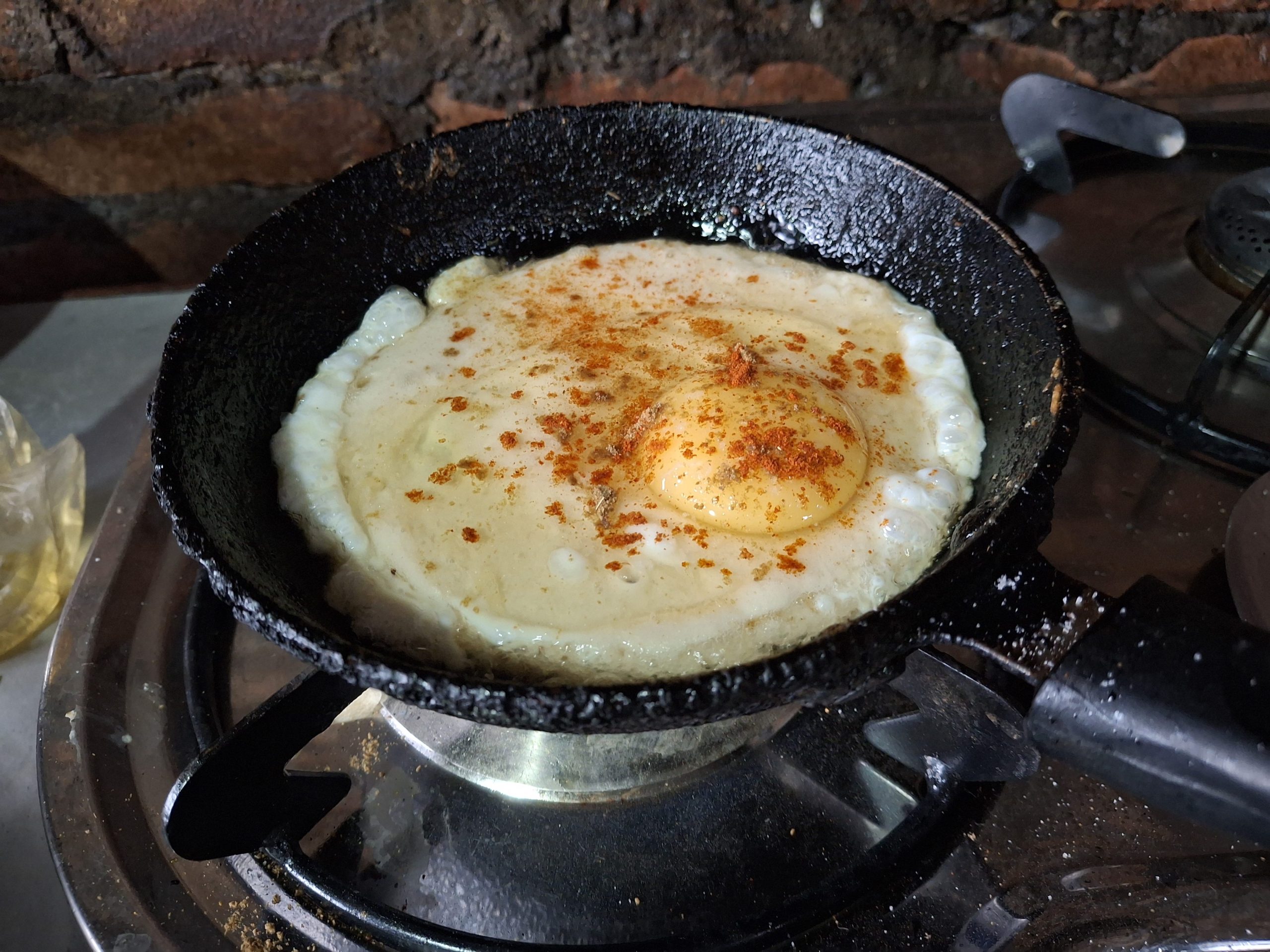Bara and Anda Bara

Bara, also known as “Wo” in the Newari language, is a traditional Nepali snack that holds a special place in the hearts of the Newari community in Nepal. This savory lentil-based pancake is a staple at festivals, birthdays, weddings, and other celebrations, symbolizing good luck and prosperity. Anda Bara, a variation topped with an egg, adds a rich and flavorful twist to the classic recipe. Both versions are crispy on the outside, soft and fluffy on the inside, and packed with protein, making them a nutritious and delicious treat. In this blog, we’ll explore the cultural significance of Bara and Anda Bara and share an easy-to-follow recipe to bring this Nepali delicacy to your kitchen.
Cultural Significance
Bara is deeply rooted in Newari culture, primarily among the indigenous people of the Kathmandu Valley. It is often served as part of a “Sagun” ceremony, a good-luck ritual during special occasions, alongside items like boiled eggs, fried fish, and Newari drinks like Aila (a distilled liquor) or Chayang (a rice-based beverage). The dish is also a key component of the “Samay Baji” platter, a traditional Newari feast that includes various dishes like chhoila (spiced meat), aaloo tama (potato and bamboo shoot curry), and pickles. Bara’s versatility allows it to be enjoyed plain, with chutneys, or as a base for toppings like minced meat or eggs, as in Anda Bara. Its golden-brown appearance and wholesome ingredients make it a beloved snack across Nepal, served hot with spicy tomato achar or a cup of spiced milk tea.
Bara and Anda Bara Recipe

Below is a simple recipe for making both Bara and Anda Bara at home. This recipe is vegan and gluten-free for plain Bara, with an optional egg topping for Anda Bara.
Ingredients (Serves 4)
-
2 cups split black lentils (urad dal) or split moong lentils (mung dal), or a mix of both
-
1 tablespoon ginger paste
-
1 tablespoon garlic paste
-
1-2 green chilies, finely chopped (optional, adjust to taste)
-
1/2 teaspoon turmeric powder
-
1/2 teaspoon cumin powder
-
1/4 teaspoon asafoetida (hing, optional)
-
Salt to taste
-
1/4 cup chopped fresh coriander (optional)
-
4 eggs (for Anda Bara, optional)
-
Vegetable oil for frying
-
Water as needed
Equipment
-
Blender or food processor
-
Non-stick frying pan or cast-iron skillet
-
Mixing bowl
Instructions for Bara and Anda Bara
-
Soak the Lentils
Rinse the lentils thoroughly and soak them in a large bowl of water for 6-8 hours or overnight. If using black lentils with skin, rub the soaked lentils between your palms to remove the skins, then rinse to separate the skins from the lentils. -
Prepare the Batter
Drain the soaked lentils and transfer them to a blender or food processor. Add 1-2 tablespoons of water and grind into a smooth, thick paste. The batter should be slightly thicker than pancake batter—avoid making it too runny. Transfer the batter to a mixing bowl. -
Season the Batter
Add ginger paste, garlic paste, chopped green chilies, turmeric, cumin powder, asafoetida, salt, and chopped coriander (if using) to the batter. Whisk for 1-2 minutes to incorporate air, making the Bara lighter and fluffier. -
Heat the Pan
Heat a non-stick or cast-iron skillet over medium heat and add 1/2 tablespoon of vegetable oil. Ensure the pan is well-heated to prevent sticking. -
Cook Plain Bara
Pour a ladleful (about 1/4 cup) of batter onto the hot pan, spreading it gently into a small, round pancake about 3-4 inches in diameter. Cook for 2-3 minutes until the edges are golden brown and crispy, then flip and cook the other side for another 2-3 minutes. Remove and place on a paper towel to drain excess oil. Repeat with the remaining batter. -
Cook Anda Bara (Optional)
For Anda Bara, pour a ladleful of batter onto the hot pan as above. Immediately crack an egg over the center of the batter and spread it slightly with a spatula. Cook for 2-3 minutes until the egg begins to set and the bottom is golden. Flip carefully and cook for another 1-2 minutes until the egg is fully cooked. Remove and drain on a paper towel. -
Serve
Serve Bara and Anda Bara hot with tomato achar, green chili chutney, or a side of spicy potato curry (piro aloo). They pair wonderfully with a cup of Nepali spiced tea or as part of a Samay Baji platter.
Tips for Success
-
Batter Consistency: The batter should be thick but pourable. If it’s too thick, add water 1 teaspoon at a time; if too thin, add a tablespoon of lentil flour.
-
Non-Stick Pan: Use a well-seasoned cast-iron skillet or non-stick pan to prevent sticking, especially for plain Bara.
-
Make Ahead: You can prepare the batter a day in advance and refrigerate it. Stir well before cooking.
-
Variations: For a non-vegetarian twist, add minced chicken or lamb to the batter before cooking, or top with minced meat instead of eggs.
-
Storage: Store leftovers in an airtight container in the refrigerator for up to 2 days or freeze for up to a month. Reheat in a hot skillet to restore crispiness.
Why You’ll Love Bara and Anda Bara
Bara and Anda Bara are not just delicious; they’re a celebration of Nepali culture and culinary tradition. The lentil base makes them a healthy, protein-packed snack, while the spices add a burst of flavor that’s both comforting and exciting. Whether you’re hosting a gathering or simply craving a unique appetizer, this dish is sure to impress. Try this recipe and let the flavors of Nepal fill your kitchen!
Sources: Adapted from traditional Newari recipes and inspired by resources like Newari Recipes Hut and Joy of Eating the World.
